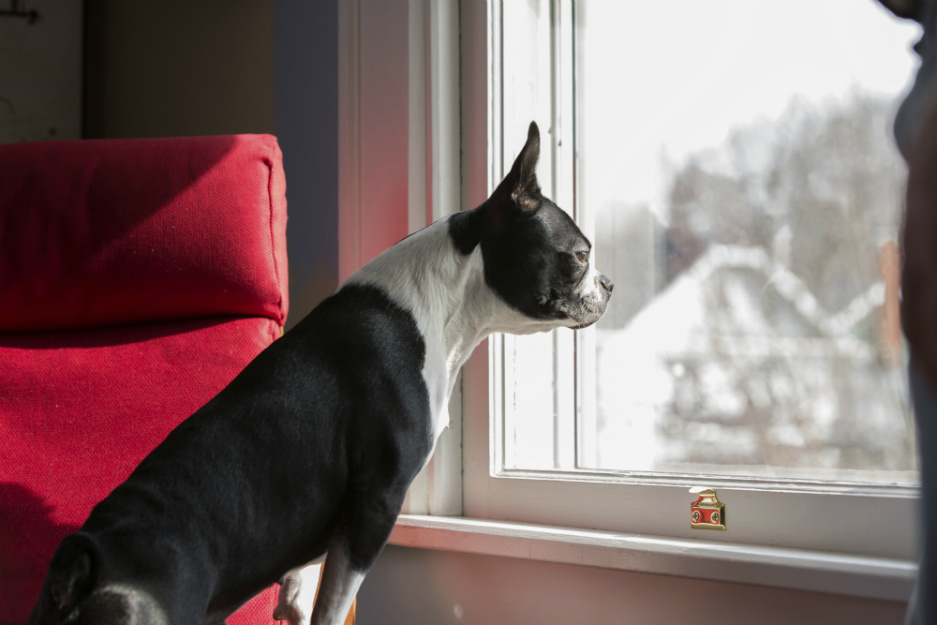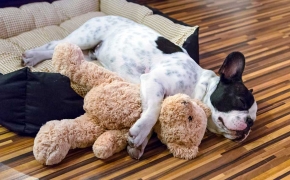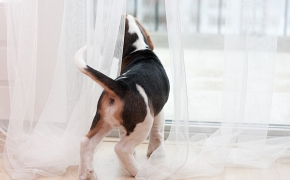When will you be able to leave your pet on its own?

The important question is not “when” but “how” to prepare for this moment, and you can start with some exercises to get your pet used to being on its own from day one. If you have never got it used to being alone, when you have to leave it on its own it will suffer more than if it has been accustomed to it since a young age.
Will my pet stay calm?
It may stay calm... but it may not. The most frequent problems that occur when a dog is left alone at home are related to separation anxiety, which can lead to destructive behaviour due to play or exploration and to your pet relieving itself, particularly if it hasn’t learned to do its business outside the home. With cats there are often fewer problems, as long as you have provided an appropriate place for them to relax.
Can I help my pet get used to waiting?
Yes, there are exercises you can do to accustom your pet to being left on its own. The key to these exercises lies in progression and in leaving your pet with entertaining distractions to make their solitude more bearable.
There are several toys on the market that keep pets entertained and are associated with obtaining treats. These toys are a good option in this case.
How long will I be able to leave my pet on its own?
In some cases there are regulations that answer this question by establishing legal limits, e.g. in Barcelona, dogs cannot spend more than 12 hours alone in the home and the limit increases to 3 days in the case of cats. However, it is best to avoid such extremes.
For example, if you are going to leave your dog alone for more than 8 hours without a break, or if you have to leave it alone for fewer hours but you already know that it won’t remain calm, it would be better to think of alternatives. If you are obliged to leave it for such a long time alone, it would be better to engage the services of a dog carer or dog walker. A dog kennel is also a good solution in this situation. If none of these options are suitable, it might not be the right time for you to adopt a dog. With cats there is generally a greater time margin, but not all cats are the same and some require a lot of company.
Is it dangerous to leave my pet on its own?
It can be, particularly in the case of young animals who want to play and explore the house. For this reason, it’s important to leave your pet in a pet-proof area, removing the potential dangers present in the home, from toxic plants to small objects that might attract its attention but which are not toys. Also watch out for electrical cables, open windows or balconies and, where cats are concerned, be especially careful with string or thread. Everyday items we use all the time can become very dangerous when animals are bored. Don’t let them get up to too much mischief and pay close attention.
Will a dog or a cat find it easier to be left alone?
Generally speaking, cats find it easier to get used to staying at home while you’re out, but cats are not stuffed toys and may also need to be active and to have contact with you, some more than others. And if their needs are not fulfilled, they may end up developing undesirable habits, such as becoming particularly active when you’re going to bed, or developing anxiety problems, including separation anxiety, which is more frequent in dogs, but can also occur in cats.
Will a puppy adapt more easily than an adult?
Generally speaking, there are fewer problems with adult dogs: many have already learned to do their business outside and have passed the stage of being destructive in the home. However, it isn’t simply a matter of age, experience also counts: an adult dog may experience separation anxiety problems and indeed among dogs adopted as adults after having been abandoned, many develop problems related to separation from their owner.
We hope we have answered your questions here. If you really believe you don’t have enough time to provide good company for your pet, we urge you to think carefully about whether adoption is the right thing for you.



